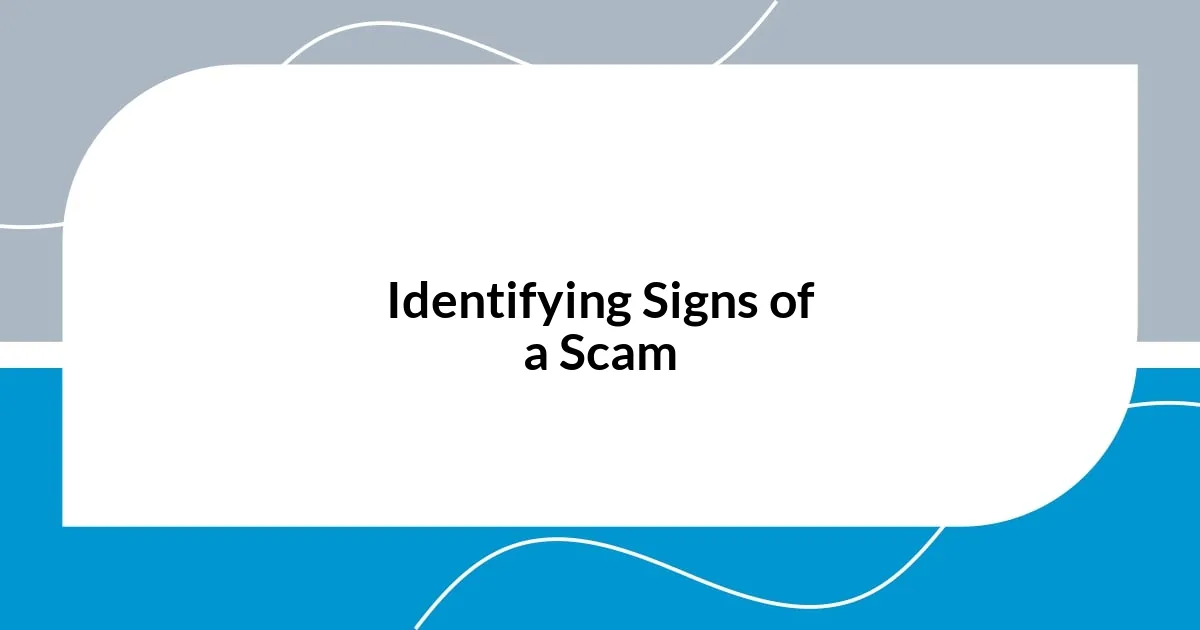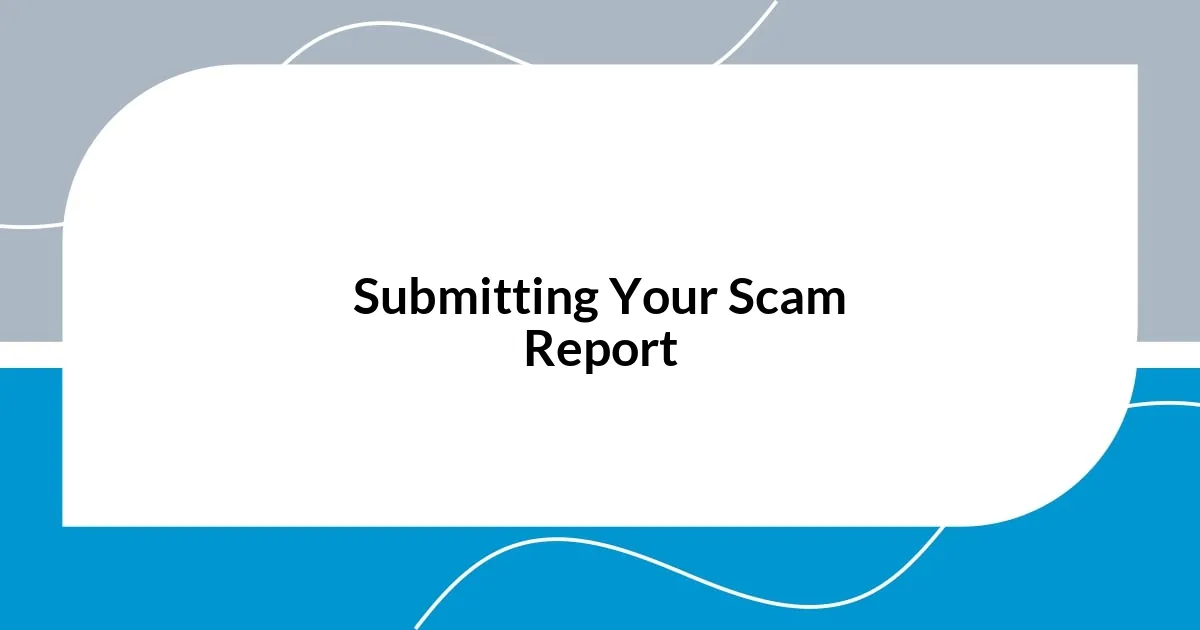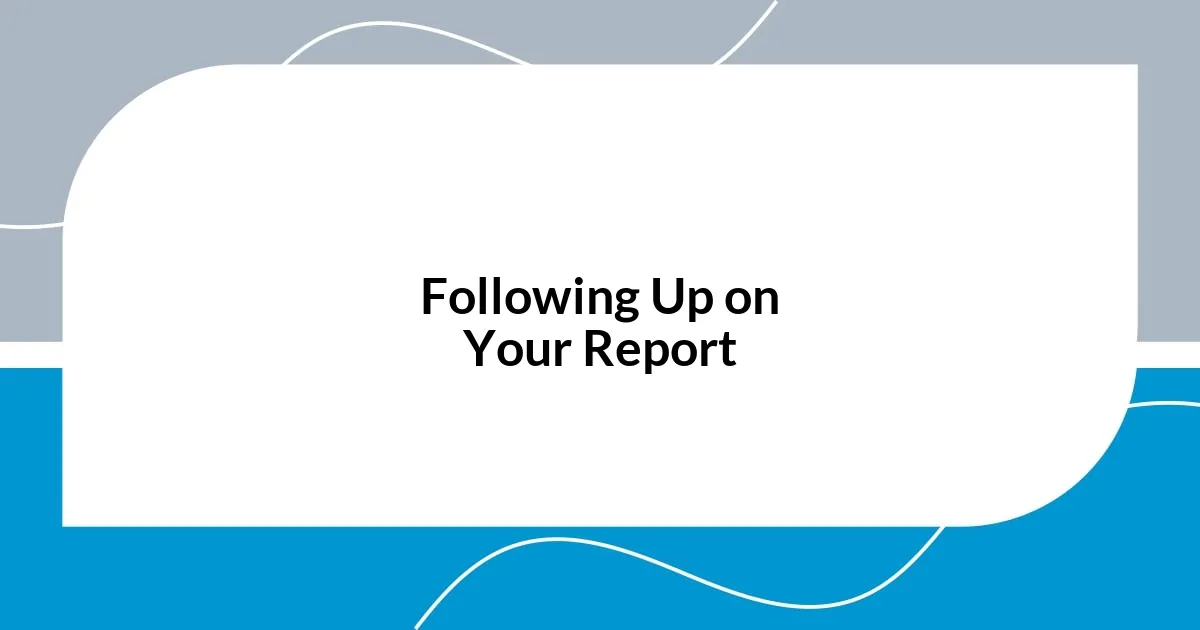Key takeaways:
- Be vigilant for signs of scams, including urgency, too-good-to-be-true offers, and generic greetings.
- Collect and organize evidence like screenshots, voicemails, and receipts to strengthen your report against scams.
- Choose the right authorities for reporting, such as local consumer protection agencies and law enforcement, to increase chances of action.
- Follow up on your report to ensure it’s taken seriously and maintain communication with authorities for further updates.

Understanding Common Local Scams
Scams can be incredibly deceptive, often preying on our emotions and trust. I remember the first time I encountered a local scam; it was a seemingly innocent phone call claiming I had won a prize. The caller’s excitement was contagious, making it hard to believe that it could be a ruse. Have you ever fallen for something that sounded too good to be true?
One common local scam involves impostors posing as utility workers. They might knock on your door during peak hours, claiming they’re there to check for gas leaks or service issues. This makes it alarming. I once had a neighbor who let such a person inside, only to find her valuables missing half an hour later. It’s easy to let your guard down when someone appears professional and urgent.
Another prevalent scheme is the classic romance scam, which thrives in our increasingly digital world. Online relationships can feel genuine, but when the conversation turns to money or unexpected emergencies, it’s a red flag. I spoke with a friend who was heartbroken after realizing that the person she’d been communicating with for months was a fake. It’s a sobering reminder that scams lurk in places we least expect, often wrapped in the disguise of kindness and understanding.

Identifying Signs of a Scam
It’s crucial to be vigilant when it comes to spotting the signs of a scam. I once received what seemed like an innocent email stating that my account needed verification. There was something off about the sender’s address, but the urgency they conveyed almost convinced me to click the link. Thankfully, I paused and did some digging, which revealed it as a phishing attempt. Trusting your instincts can sometimes be the most effective way to protect yourself.
Here are some key signs to help you identify potential scams:
- Urgency: Scammers often create a sense of panic, urging you to act quickly. It’s a tactic designed to cloud your judgment.
- Too Good to Be True Offers: If it sounds miraculous—like a huge payout for minimal effort—it’s likely a trap.
- Unfamiliar Sender: Be wary of emails or calls from unknown sources, especially if they request personal information.
- Generic Greetings: Scammers typically use vague salutations instead of addressing you by name, indicating a mass email approach.
- High-Pressure Tactics: If someone is pressuring you for immediate action, it’s a serious red flag. Take a step back and assess the situation calmly.
By staying aware of these signs, you can better shield yourself from falling victim to scams.

Collecting Evidence for Reporting
Collecting evidence is a crucial step in reporting a local scam. I remember when I first learned the importance of documentation; I had a friend who fell victim to an online scam. She kept all the emails and chat logs, which played a significant role when she reported the issue. The prosecutor said that her detailed evidence made it easier to track the scammer and prevent others from falling prey. Keeping a record of every instance can greatly enhance your report.
I often suggest taking screenshots or saving voicemails when scams occur. There’s a particular incident I encountered where a scammer claimed to offer a home repair service at an unbelievable price. I saved a screenshot of the initial offer along with the follow-up messages. When I reached out to local authorities, they expressed how these pieces of evidence could help identify patterns and protect other residents. It’s amazing what a little foresight can do.
Ultimately, organizing your evidence can save you a lot of headaches in the reporting process. Consider creating a simple folder on your computer or a physical file where you can store all related documents. By categorizing them, such as by date or type of interaction, you can quickly access everything you need. During my own experience, this level of organization allowed me to present my case clearly.
| Type of Evidence | Importance |
|---|---|
| Screenshots | Visual proof of communication and offers |
| Voicemails | Recordings that capture urgency and pressure |
| Receipt Copies | Evidences purchase or payment made to the scammer |

Choosing the Right Authorities
When it comes to reporting a local scam, choosing the right authorities is essential. I remember when I first encountered a scam, I felt lost regarding whom to contact. After some research, I discovered that local consumer protection agencies were incredibly helpful, as they specialize in these matters. Asking yourself, “Who would handle this in my community?” can guide you to the right channels.
Additionally, I found that law enforcement plays a vital role, especially for scams involving financial fraud. Many people overlook local police departments, thinking they’re only for emergencies. However, in my case, when I reported a scammer who posed as a contractor, the police were very receptive. It made me realize the importance of supporting local efforts to combat crime. Have you considered reaching out to your state’s Attorney General’s office? They often have specific departments dedicated to consumer rights that can assist in significant cases.
Finally, don’t forget about online platforms where scams are reported. Sites like the Better Business Bureau or consumer review websites can amplify voices and raise awareness. I once shared a cautionary tale online, which not only garnered attention but also helped others avoid similar pitfalls. Reflecting on this, I can’t stress enough that spreading the word through multiple authorities increases the chances of action.

Submitting Your Scam Report
Once you’ve gathered your evidence, the next step is submitting your scam report. I still recall the nerves I felt when I picked up the phone to report a scam that had targeted many in my community. It was daunting, and I kept thinking, “Would they even take me seriously?” However, I quickly learned that local authorities generally appreciate when someone steps up to report these issues. It’s empowering to know that by voicing your experience, you could help prevent someone else from falling victim.
When I finally submitted my report, I made sure to include all the details I had collected. I typed up a brief narrative, highlighting key events and attaching relevant screenshots. You might wonder if this is overkill; however, I can’t emphasize enough how thoroughness makes a difference. Authorities are more likely to act on information that’s well-organized. Looking back, I remember feeling a sense of relief once I hit “send.” It’s a vital step in taking control of the situation.
The manner in which you submit your report can vary, depending on the authority you’ve chosen. Some prefer online submissions, while others may want a face-to-face meeting. My experience showed me that speaking directly to someone, even if just for a moment, can personalize the issue. It shifts the conversation from a faceless complaint to a narrative with human experience behind it. So, consider which method feels right for you and your situation, as it can certainly impact how your report is received.

Following Up on Your Report
Following up on your report is crucial to ensure that your voice is heard and your concerns are taken seriously. After I filed my report, I felt a mix of anxiety and hope. I remember waiting a few days, wondering, “Did they even read it?” To my surprise, I received a call from a local investigator who wanted to discuss the details further. That moment illustrated how essential it is to remain proactive.
It’s a good idea to check back with the authorities if you don’t hear from them within a week or two. While it might feel awkward to follow up, I found that my persistence often led to more information and updates on the case. During one of my follow-ups, the investigator even shared updates about other similar incidents they were handling—this made me feel connected to a larger effort. It can be comforting to know you’re not alone in this.
Moreover, I learned the importance of documenting each interaction. Note down the names of the people you speak with and the dates of your follow-ups. I remember feeling reassured every time I went back to my notes, reminding myself, “I’m taking action.” Keeping a record not only shows your commitment but also helps when you need to escalate the situation. So, are you prepared to stay engaged and be that persistent voice for change?